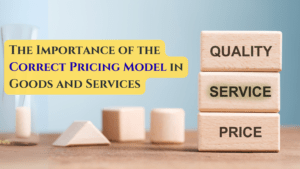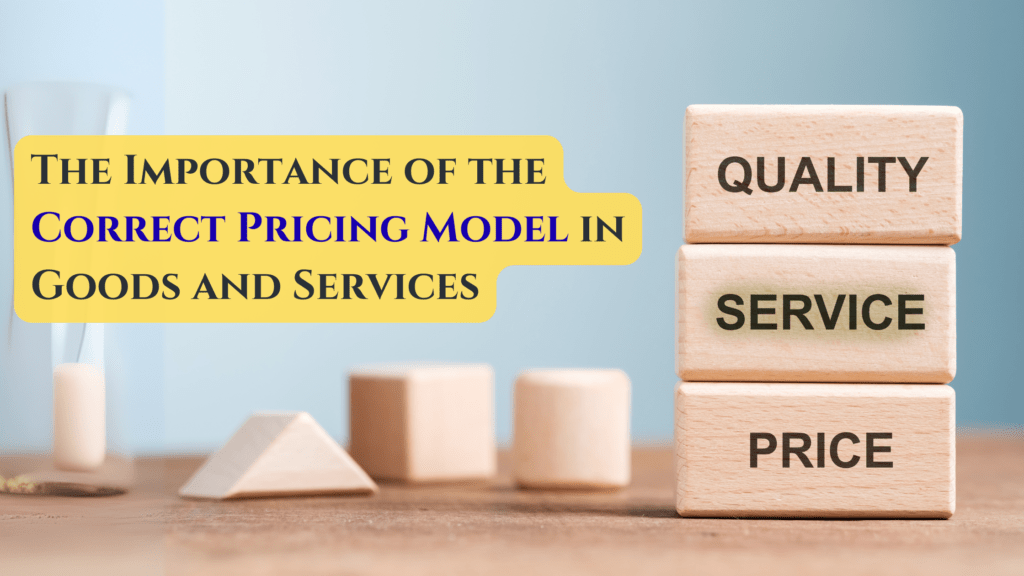Setting the right price isn’t just a numbers game. It’s a strategic decision that shapes how customers perceive your brand, impacts your bottom line, and determines long-term sustainability. At Account It Right, we’ve helped dozens of clients across industries select and refine the correct pricing models that align with their value proposition and market dynamics.
What Is a Pricing Model?
A pricing model is the framework businesses use to decide how much to charge for products or services. Common approaches include:
- Cost-plus pricing: adding a fixed markup over production or acquisition costs
- Value-based pricing: charging based on the customer’s perceived value
- Subscription and tiered pricing: recurring fees or package levels
- Dynamic pricing: real-time adjustments based on demand, competition, or inventory
Choosing the right model ensures you capture every revenue opportunity while delivering what customers expect.
Why the Correct Pricing Model Matters
- Reflects Your Value Proposition
When you price based on value, you communicate quality, innovation, or service excellence. A mismatched model can undercut your advantage or price you out of your target market. - Drives Profitability and Cash Flow
Undercutting costs erodes margins; overpricing suppresses volume. The correct model balances cost coverage, desired profit margin, and market willingness to pay. - Shapes Demand and Market Position
Dynamic and tiered models let you segment customers, capture more market share, and respond to competitive moves. They’re especially useful in crowded or rapidly changing industries. - Ensures Regulatory and Tax Compliance
In regions with evolving VAT or sales tax rules—like the new 12% VAT on digital services in the Philippines—your pricing must factor in tax obligations. Underpricing can lead to penalties; overpricing can drive customers away. - Supports Sustainable Growth
As costs, competition, or customer needs shift, a scalable pricing model lets you adapt without overhauling your entire strategy.
After setting your price, the next thing to set to establish a good marketing strategy is to know your break-even point. This is the sales you need to hit enough to cover all expenses.
How to Choose and Optimize Your Pricing Model
A profitable pricing model doesn’t just attract customers—it ensures your revenue covers costs and fuels growth. Each step below is enhanced by integrating your break-even point to guide smarter, data-backed decisions.
1. Conduct a Pricing Audit
Mapping your fixed and variable costs is the foundation of break-even analysis.
- Fixed Costs: Rent, utilities, staff salaries—unchanging regardless of sales volume.
- Variable Costs: Packaging, commissions, raw materials—directly tied to output.
Use this formula to find your break-even point:
Break-Even Point (units)=Fixed CostsSelling Price per Unit−Variable Cost per Unit\text{Break-Even Point (units)} = \frac{\text{Fixed Costs}}{\text{Selling Price per Unit} – \text{Variable Cost per Unit}}
This tells you how many units you must sell to cover expenses. It’s a critical benchmark: price below break-even and your margins evaporate.
2. Research Customer Perceptions
Use surveys, A/B tests, or focus groups to identify price sensitivity and perceived value.
When analyzing feedback, cross-check if the preferred price points exceed your break-even floor. If a price looks attractive to customers but falls below profitability thresholds, it needs justification through higher volume or bundled value.
3. Benchmark Competitors
Position your pricing within the competitive landscape by evaluating:
- Direct rivals with similar offerings
- Indirect competitors in adjacent categories
Compare their price structures against your break-even point:
- If your cost structure enables undercutting competitors while remaining above break-even—leverage it.
- If not, emphasize differentiated value (e.g., better support, bonus features) to justify premiums.
4. Test Price Elasticity
Adjust prices incrementally to measure demand sensitivity. For example:
- Raise prices 5% and track conversion decline
- Drop prices 5% and track volume increase
Elastic products (high sensitivity) require pricing near or above break-even to maintain sales volume. Inelastic products can tolerate price increases, resulting in higher contribution margins and faster profit realization past the break-even point.
5. Run a Price Optimization Study
Annual or bi-annual reviews should include updated break-even calculations:
- Cost structures evolve—adjust fixed and variable inputs
- Selling price shifts should be rechecked against contribution margin
- Introduce tiered pricing while maintaining profitability per tier
Use scenario models to anticipate outcomes of cost hikes, discounts, or bundling strategies relative to break-even targets.
6. Leverage Professional Expertise
Partnering with specialists like Account It Right gives you:
- Advanced break-even forecasting per product or service category
- Layered pricing strategies that integrate tax compliance and financial projections
- Ongoing monitoring to ensure your chosen price points remain profitable as market dynamics shift
Their combined analytical and regulatory insights help you refine your pricing model not just for sales—but for sustainable profitability.
Pro Tip: Measure Your Margin of Safety
To see how comfortably you sit above break-even, calculate:
Margin of Safety (%)=Current Sales−Break-Even SalesCurrent Sales×100\text{Margin of Safety (\%)} = \frac{\text{Current Sales} – \text{Break-Even Sales}}{\text{Current Sales}} \times 100
A wider margin means more cushion during seasonal drops or promotional slumps, giving you strategic flexibility without risking loss.
Selecting the correct pricing model is a cornerstone of business success. It influences customer loyalty, regulatory compliance, and profitability in equal measure. Whether you’re launching a new product or revisiting existing prices, invest time in research, testing, and professional guidance. At Account It Right, we specialize in crafting tailored pricing strategies that align with your objectives and market realities—so you can focus on what matters most: growing your business.
Sources: Priceva Blog | HubSpot | ChargeOver | GeeksforGeeks | Vistage Research Center





